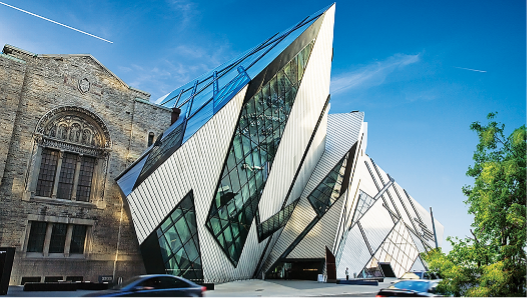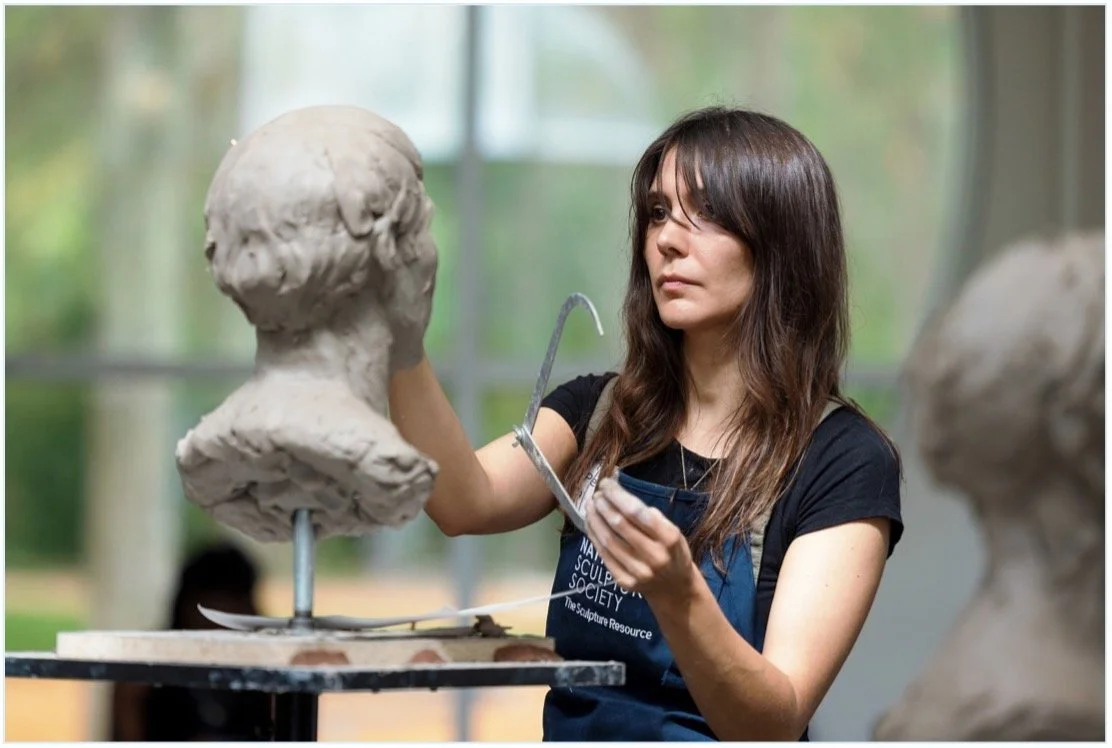Royal Ontario Museum
CURATOR OF PLANTS & SUSTAINABILITY
Toronto, Ontario, Canada
Application Deadline: CLOSED
The Museum
The Royal Ontario Museum (ROM) is Canada’s premier museum, featuring a comprehensive collection of Art, Culture and Nature. Among the top 10 cultural institutions in North America, ROM has a world-class collection of 18 million artworks, cultural objects, and natural history specimens, featured in 40 gallery and exhibition spaces. ROM's mission is to transform lives by helping people to understand the past, make sense of the present, and come together to shape a shared future. The Museum is known globally for expanding the boundaries of knowledge and presenting that knowledge in new and innovative ways within the intersecting worlds of art, culture, and nature.
Evolving for the 21st Century
ROM’s vision is to become a distinctly twenty-first century museum, one that is globally recognized for expanding the boundaries of knowledge, fostering innovation in presenting that knowledge, and increasing public relevance within the intersecting worlds of art, culture, and nature.
To realize this vision, ROM has embarked on a new strategic direction that builds on its strengths and capabilities, while evolving in step with a rapidly changing world. The Museum is becoming an ever more outward-facing institution, focused on playing a central role in community and cultural life, while increasing artistic, cultural, and scientific impact both nationally and internationally. ROM's extensive exhibition schedule and public programs attract approximately 190,000 students and a total average attendance of more than one million visitors annually. As the country’s preeminent field research institution and an international leader in collections-based discoveries, ROM builds and shares global collections, creates knowledge, inspires learning, encourages gathering, and sparks exchange on topics that matter to people and communities.
Situated in the most diverse major city in the world, Toronto, within a province and country known for pluralism, openness, and global perspectives, ROM is well positioned for the future and for an even larger role on the world stage, encouraging greater engagement through inclusion and transdisciplinary thinking. Learn more about ROM’s Strategic Direction.
Curator of Plants & Sustainability Overview
Plants are essential to life on Earth, providing the oxygen and food on which all life depends. Plants are the foundation of the world’s biodiversity—and form a Kingdom of more than 250,000 species that define and sustain ecosystems and regulate the planet’s climate. Plants serve as indicators of the effects of global change on Earth’s ecosystems and are essential to life sustainability. Plants and plant-derived products have been fundamental to the development of human societies and cultures, providing housing, clothing, food, and medicine, as well as aesthetic pleasure and inspiration to all peoples.
Developing human understanding of plant diversity, ecology, evolution, and function is critical to addressing the complex challenges facing society today, including rapid biodiversity loss, agricultural sustainability, land use, human health, and climate change. As Canada’s largest museum and most highly visited cultural institution, ROM is ambitious in its unique capacity to facilitate discovery and awareness of the fundamental role of plants in global ecosystems and human culture. The Museum’s botanical collection is world-class and global in scope, comprising more than 1.1 million specimens within ROM’s Green Plant Herbarium, including the largest and most representative collection of Ontario flora available. This diverse trove of specimens of flowering plants, conifers, ferns, mosses, algae, seeds, and pollen from varied habitats and geographic regions is an invaluable resource, used regularly by local and international researchers, naturalists, and biologists seeking to document and understand plant diversity. This unparalleled resource supports ROM public programs, exhibitions, and galleries by bridging the realms of art, culture, and nature.
The Position: Curator of Plants & Sustainability
ROM seeks an innovative and collaborative Curator to build, research, interpret, and share the Museum’s plants collection and to be an engaging spokesperson for the importance of green plants, including vascular plants, pteridophytes, bryophytes, and algae. The Curator of Plants will initiate and develop transdisciplinary exhibitions and public programs, build a strong museum-based research program, collaborate with academic institutions (such as the University of Toronto), community groups and stakeholders, and demonstrate exceptional leadership, listening, and communication skills. Recognizing multiple voices and types of authority, the position will encourage and educate the public at all levels of interest, as well as train the next generation of plant biologists. The Curator will conduct conceptually driven, collection-based research in botanical systematics, ecology, and evolution in the context of plant conservation and plants’ role in sustainability and human society. Candidates’ collection-based research program will integrate into the highly collaborative and interdisciplinary research of ROM’s Department of Natural History and complement the Museum’s art and cultural disciplines.
The successful candidate will be an accomplished practicing scientist who has embarked on a successful career, has a high level of academic achievement for their career stage, and who is deeply interested in having a strong public-facing role. An equivalent in relevant experience, research, exhibitions and/or publications will be considered.
There may be opportunities for university cross-appointment (including at the University of Toronto) as well as eligibility for Natural Sciences and Engineering Research Council (NSERC) funding in support of research.
Exceptional early career and mid-career scientists are encouraged to apply.
Education & Experience
A Ph.D. or equivalent in plant systematics, plant ecology, or plant conservation biology, and well versed in plant taxonomy and phylogenetics. Knowledge of methods for analyzing DNA, morphological datasets, phylogenomics, comparative genomics, palaeobotany, evolutionary biology, and historical biogeography are considered assets.
At least one year of postdoctoral or equivalent experience within a large transdisciplinary museum, university, NGO or government department, or a related environment, including working with internal and external stakeholders and partners.
Experience proposing and developing museum exhibitions and public programs, or a strong interest in doing so
Interest in science communication and outreach, and eager to engage with the public; a strong public speaker.
Experience collaborating with Indigenous communities, lived Indigenous experience, international experience, and cross-cultural experience are assets.
A record of original research and peer-reviewed publications or catalogues and eligibility for university cross-appointment
The ROM Curator will:
Passionately engage the public, fostering understanding and dialogue on the importance of plants as fundamental to the well-being and long-term sustainability of humankind.
Promote and facilitate scientific and public access to ROM’s extraordinary Green Plant Collection.
Establish a vision and ten-year plan for continuing to develop ROM’s Green Plant Collection.
Create impactful programs, panels, and publications that engage both experts and broad audiences, and enhance recognition of the central role plants play in ecosystems and human society.
Conduct conceptually driven, collection-aligned, original research on the systematics and evolution of green plants with a breadth of interests that may include plant ecology, ethnobotany, conservation biology, global environmental and climate change, pollinator interactions, and sustainability; develop a program of externally funded scholarly research and publications that is accessible and relevant on multiple levels, including to a broad public audience.
Lead collaboratively within transdisciplinary exhibition teams and with educators, programmers, and designers to integrate plant sciences into current and future development, interpretation, and installation of special exhibitions and permanent galleries involving the intersection of art, culture, and nature.
Partner with Indigenous and other communities to develop exhibitions and programs, recognizing multiple voices and sources of authority; integrate Indigenous perspectives, foster collaborative relationships and projects in close collaboration with stakeholders across disciplines and departments, as well as external partners.
Be a dynamic and effective communicator and strong spokesperson for the importance of plants and sustainability.
Participate in fundraising activities to support the growth and development of ROM’s strategic initiatives, programming, and research.
May engage in university teaching and/or supervision of graduate students and interns; be qualified for university cross-appointment, demonstrate potential for teaching undergraduate and graduate students, and be eligible for NSERC funding in support of their research (i.e. record of successful grant applications, or strong potential).
Supervise, train, and monitor contract or part-time staff, volunteers, interns, and students working in the collections and in the laboratory (onsite), and in the field (offsite).
Maintain professional affiliations in scholarly, scientific, and museum curatorial organizations, and professional societies.
Additional Assets and Experience may include:
Knowledge of museum ethics standards
Experience in plant conservation and sustainability
Herbarium curation
Digitization of botanical collections
Bioinformatics
Image collections and image banks
Contemporary floristics and phytogeography
Botanical history
Cultural uses of plants
A proven record of successful grant applications and/or philanthropy
Compensation
Salary range is $78,047 - $122,654 CAD, in accordance with union collective agreement and based on years of experience. ROM is open to considering a range of candidates from an Associate Curator level to Curator level, consistent with the candidate’s experience and the strategic goals of the museum. The salary increases according to rank and experience and is governed by a Collective Agreement.
Benefits include:
Medical and dental plan, life insurance, long-term disability insurance
Health Spending Account and fitness facility discounts
Pension plan
22 days of vacation entitlement and personal days
Employee Assistance Program
NOTE: This is a unionized position, and the Curator of Plants & Sustainability will be a member of the ROM Curatorial Association (ROMCA).
How To Apply
Applicants are encouraged to apply electronically by submitting a single PDF file containing the following documents:
A cover letter expressing interest in the position, including brief examples of past experience in exhibitions, programs, and collections, as well as proposed research areas and projects, and salary requirements.
A curriculum vitae.
Names and contact information for three references, and your professional relationship. References will not be contacted without prior permission of the applicant
Application deadline is November 15, 2025.
CLICK HERE TO APPLY
For additional information, visit: http://museum-search.com/open-searches/. Short-listed candidates will be asked to provide publication samples. Nominations are welcome.
For inquiries, please contact Ida Tomlin, Senior Search Consultant, Museum Search & Reference at: SearchandRef@museum-search.com.
Diversity Statement
At ROM, equity, diversity, and inclusivity are foundational to institutional success. ROM seeks to foster a workplace that reflects the full breadth of the communities served and welcomes applications from women, racialized persons/BIPOC, Indigenous/Aboriginal People of North America, 2SLGBTQ+, and people with disabilities.
Accessibility Statement
ROM is committed to fair and accessible employment practices. Upon request, suitable accommodations are available under the Accessibility for Ontarians with Disabilities Act (AODA) to applicants invited to an interview.
ROM is an agency of the Government of Ontario | ontario.ca.
About Toronto
Toronto is the fourth-largest city in North America. It is the country’s financial and business capital, and it welcomes 40 million tourists a year. It supports a lively arts and culture scene that includes museums, galleries, performing arts organizations, festivals (including the pre-eminent Toronto International Film Festival), a diverse restaurant scene, and hosts many working artists. It is home to five universities and four colleges. Toronto’s housing and job market, economic development, and population growth have been expanding rapidly over the past decade, and it is recognized as one of the most diverse and multi-cultural cities in the world with 47 percent of the population self-reporting as “part of a visible minority.”
One of the most livable cities in the world, Toronto is ranked as the safest metropolitan area in North America. It has many excellent public schools and a comprehensive public transportation system that includes buses, subways, streetcars, and a public bike program. The city has trendy and up-and-coming neighbourhoods while at the same time, there are quiet neighborhoods providing an escape beyond the bustle of downtown. Lake Ontario makes up the southern boundary of the city and provides many kilometres of beautiful, accessible waterfront. The city has many parks, and there are also recreational opportunities near the city for canoeing, hiking, and enjoying the outdoors. Toronto is surrounded by Ontario’s Greenbelt, a 2-million-acre area of green space, farmland, forests, wetlands, and watersheds that provide multiple farmers’ markets and local food options within easy reach. Niagara Falls is less than two hours away and sits adjacent to southern Ontario’s wine-growing region.




